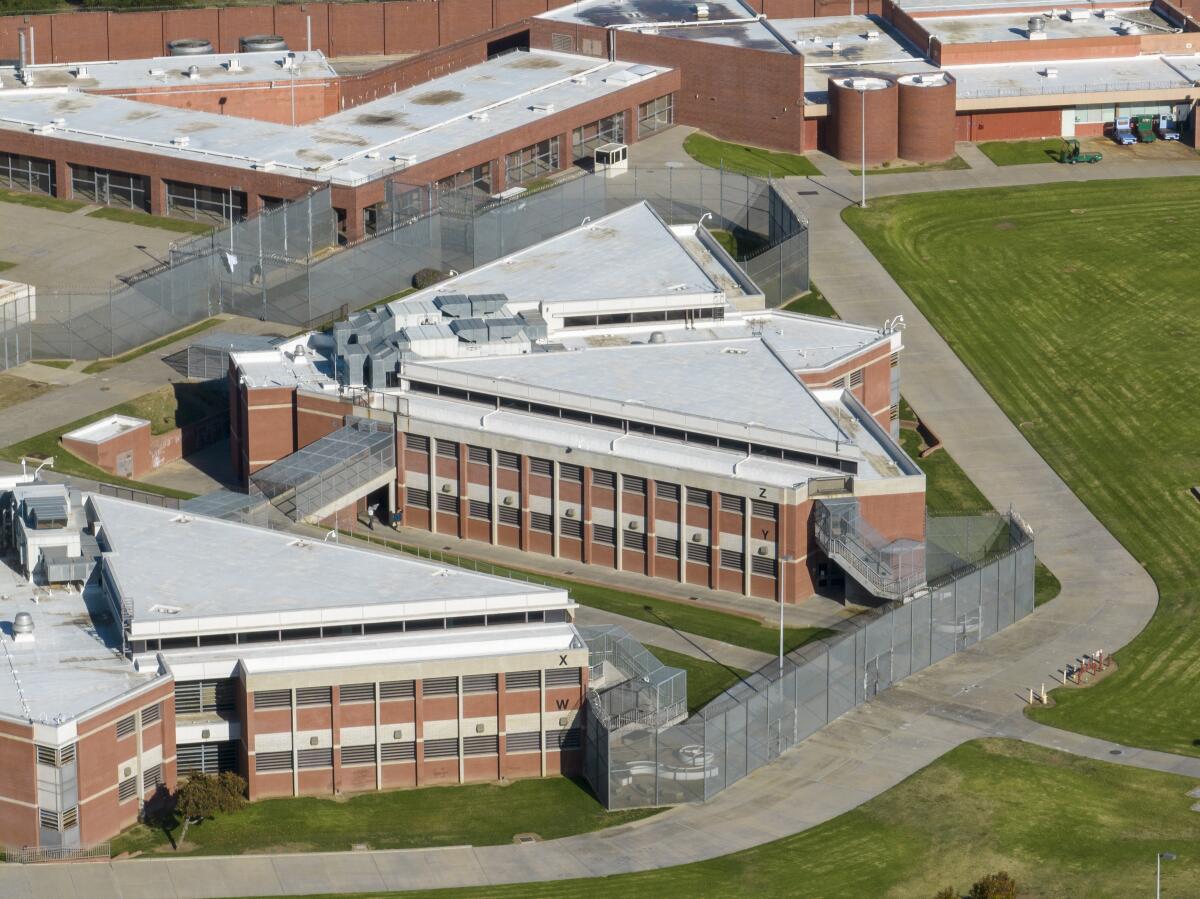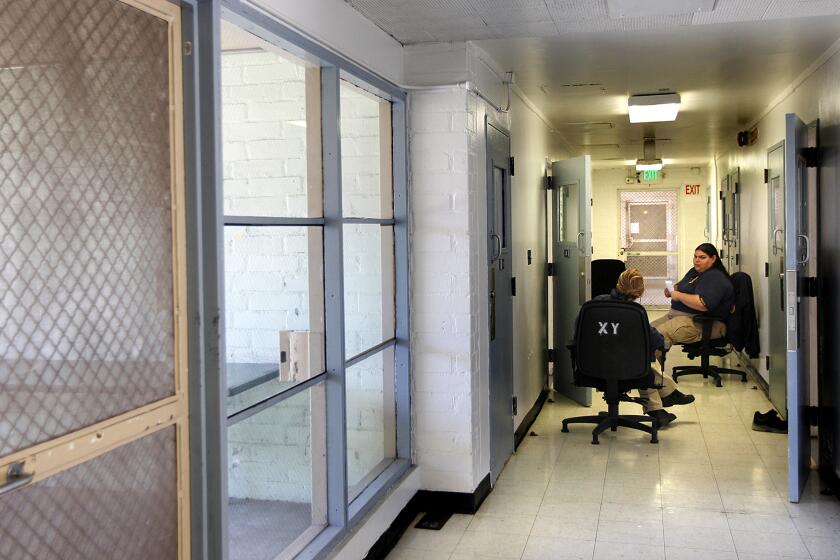Officials hastily moved kids out of L.A. juvenile hall to avoid inspection, report finds

- Share via
The top brass within the Los Angeles County Probation Department hastily moved children out of Central Juvenile Hall not for reasons of safety but to avoid political embarrassment, according to a report released Friday from a county watchdog.
The report from the county’s Office of Inspector General, which acts as an investigatory arm for the Board of Supervisors, analyzed the motivations behind the Probation Department’s chaotic transfer in mid-March of roughly 140 youths from Central Juvenile Hall in Lincoln Heights, days ahead of a scheduled state inspection of the facility, to the Barry J. Nidorf Juvenile Hall in Sylmar.
The report found that the Probation Department orchestrated the disorganized transfer to avoid an inspection that officials believed they would fail.
“What our report does is collectively confirms what I think everybody knew at the time, which is that the move ... was not to the benefit of the youth and staff and was only to the benefit of the top management,” Inspector General Max Huntsman said in an interview. “That’s why it was done, and it was inappropriate.”
The California State Board of Community Corrections, which licenses county juvenile detention facilities, had scheduled an inspection of the troubled Central Juvenile Hall starting March 14. The state was requiring the department to make improvements after repeatedly finding conditions inside the facility that violated state regulations.
Chief Probation Officer Adolfo Gonzales told the Probation Oversight Commission in an April meeting that department officials knew “the inspection was not going to go well based on an internal audit,” according to the inspector general’s report. Gonzales acknowledged that “we were not doing the work we should have been doing,” the report said.
Believing that state regulators would delay the inspection of Central if there were no juveniles to observe, Probation Department leaders decided March 11 to start moving the youth into the Nidorf facility the next day.
The plan to move approximately 140 vulnerable minors, many of whom have severe mental health and behavioral issues, came together in less than one day. Many of the oversight groups that act as watchdogs for the department did not know about the transfer until the following week, the report said.
A supervising probation officer told county inspectors that some staff members showed up for their scheduled shifts at Central unaware that all the youths were gone. Neither the children nor their parents were given advance notice of the move. Inspectors who took a tour of Central post-transfer found playing cards at the table in the day room — evidence, they said, of a hastily orchestrated departure.
Some probation officers have said the abrupt transfer was not just chaotic but dangerous. In the month following the transfer, there were more incidents of violence, property damage, threats and staff uses of force at Nidorf, according to the inspector general’s report.
While it’s possible the influx of youths led to some of the uptick in violence, many probation staffers who spoke with The Times for a November investigation blamed the chaotic transfer, which caused an unstable situation to spiral further out of control, they said.
Employees said that upon arriving at the San Fernando Valley facility, youths hurled fire extinguishers and threw urine at a probation officer.
The Probation Department declined to comment. The department has said that parents were properly notified and that there were “safeguards in place during transport” to make sure the youths and staff were safe. The department said at the time that the move was the result of “a temporary 90-day suspension of operations.”
Friday’s report accuses the Probation Department of misrepresenting the reason behind the disorganized move. Probation Department Chief Deputy Karen Fletcher told staff in a March 14 email that the transfer was unexpected and due “to circumstances which were out of our immediate control.” However, according to records obtained by the inspectors, probation officers had been told twice via email, on Jan. 27 and Feb. 23, of a March 14 inspection.
All 147 youths at Central Juvenile Hall were moved out over the weekend in a mass transfer that employees called disorganized and dangerous.
The report chastises the department for public statements that contradict internal emails.
“Misrepresentations by Probation Department management about the reasons for the last minute decision to transfer erode public trust,” the report states. “Transparency is one of the necessary steps to ensuring the county’s goal to improve the Probation Department’s treatment of the youth in the juvenile halls.”
The report, released on the last business day of 2022, bookends a tumultuous year for the Probation Department.
The year started with an “imposter” who pretended to be a medical professional accessing a juvenile detention facility and swabbing the mouths of several children.
A few weeks ago, the Board of Supervisors publicly reprimanded Gonzales, the probation chief, for failing to phase out the use of pepper spray on youths, which the Board banned nearly four years ago.
And the inspector general has found twice this year that the Probation Department is not in compliance with some requirements stemming from a settlement agreement with the California Department of Justice related to conditions at the county’s juvenile halls.
The most recent compliance report, also released Friday by the Office of Inspector General, found that staffers were not effectively tracking uses of force nor providing sufficient training on use of pepper spray, among other failures.
The Probation Department has previously said that many of the problems it is experiencing stem from a severe staffing shortage and pandemic-related hurdles. But the controversy surrounding the March transfer, county inspectors maintain, was entirely self-inflicted.
“The available evidence shows that the Probation Department made the transfer of youths ... to avoid the embarrassment and consequences of failing” an inspection, the report said. “It created its own crisis situation.”
More to Read
Sign up for Essential California
The most important California stories and recommendations in your inbox every morning.
You may occasionally receive promotional content from the Los Angeles Times.












